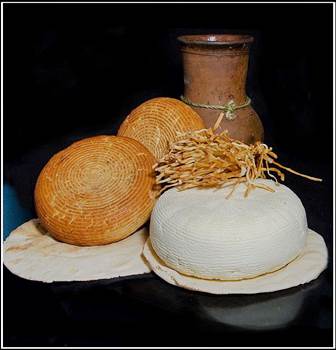
For more than two thousand years, wine and cheese have enjoyed a close friendship with each other. The main reason for this association may be due to the facts that both these products are made mostly in the same regions and both have always been available easily to the common folk.
A closer look at old paintings would reveal a lot of meat on food plates. However it was an expensive product in those times while cheese, in all its forms, was always present on every food table.
The Secret of Wine and Cheese Combination
The secret to the power of this strong alliance lies in the complimentary tastes of both wine and cheese. The taste of both these products is formed by various taste tones and overtones that they acquire during their production process.
In the case of wine, the tones are mostly fruit and garden related while in the case of cheese, it carries more of the soil tones, especially in the case of the blue cheese. Therefore, it is suggested to pick the wine and the cheese from the same region, so that their combination is perfect and truly represents the vibe of their land of origin. Such a choice for your wine and cheese will turn your simple evening into something special, like travelling to the land where these products were made and savoring that region’s beauty.
Some Tips for Combining Wine and Cheese
Please note that tips in this article are related to good quality wine and cheese. The cheapest supermarket stuff might not produce the desired taste.
Based on the type of wine, it is relatively easy to make tasty combinations:
- White dry wine is best to combine with practically all types of cheese. So, it’s the safest of choices to go along.
- With Red dry wine, try to avoid cheese with a strong taste, like blue cheese. The reason is that strong cheese would enhance the taste of tannin, not the best of a wine’s tones, and the overall taste would be spoiled.
- Another safe pick could be a Dessert wine as its strong sweet taste will be able to balance and even out the blue cheese. However, this wine might have a negative impact on fresh cheese or cheese with a weaker taste.
- As far as the cheese is concerned, always try to avoid cheese with a lot of fat as it will usually cover the inside of your mouth with a thin foil of fat which in turn would reduce the feel of the wine taste.
Picking the Types of Wine and Cheese
While serving wine and cheese, it’s better to pick at least two types of wines – one can be a dry white wine and the other, a dessert red – and at least three kinds of cheese. The variety of cheese served should be chosen in a descending order based on their strength of taste. However, be sure to start with at least one blue cheese.
One of the other important things to keep in mind is to serve additional elements that will help refresh the taste receptors. For example, the most traditional elements include apples, grapes and nut. However, make sure to pick fruits that are juicy but not too sweet or too sour.
Finally, it must be obvious to you by now that the biggest challenge in picking the right combination of cheese and wine pairings lies in the nature of each of these products. It might seem that the search for the best taste tones combinations might be a daunting process; however, the basic guidelines given above will make your task easier and save you time and trouble to find that perfect wine and cheese combination.
Leave a Comment